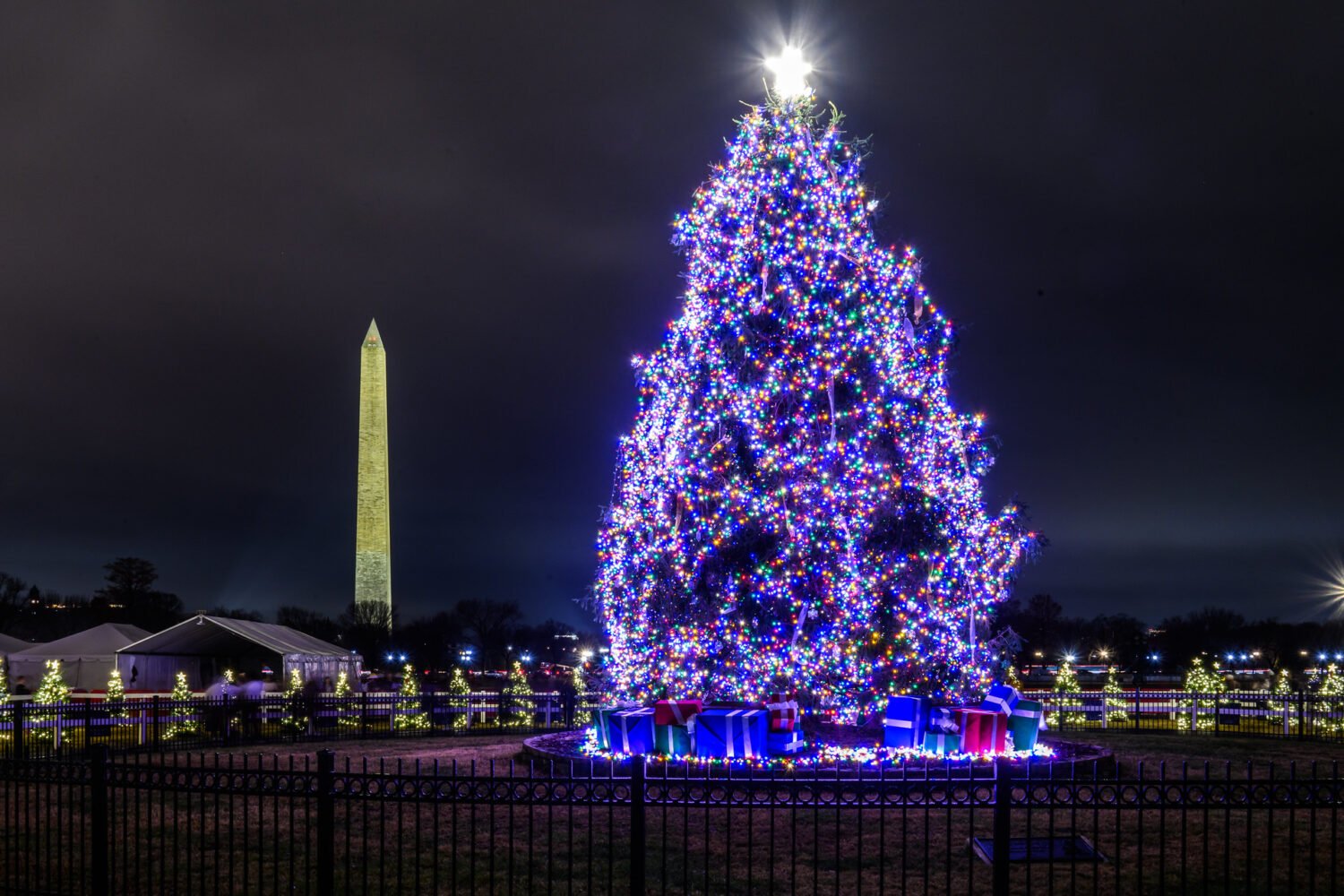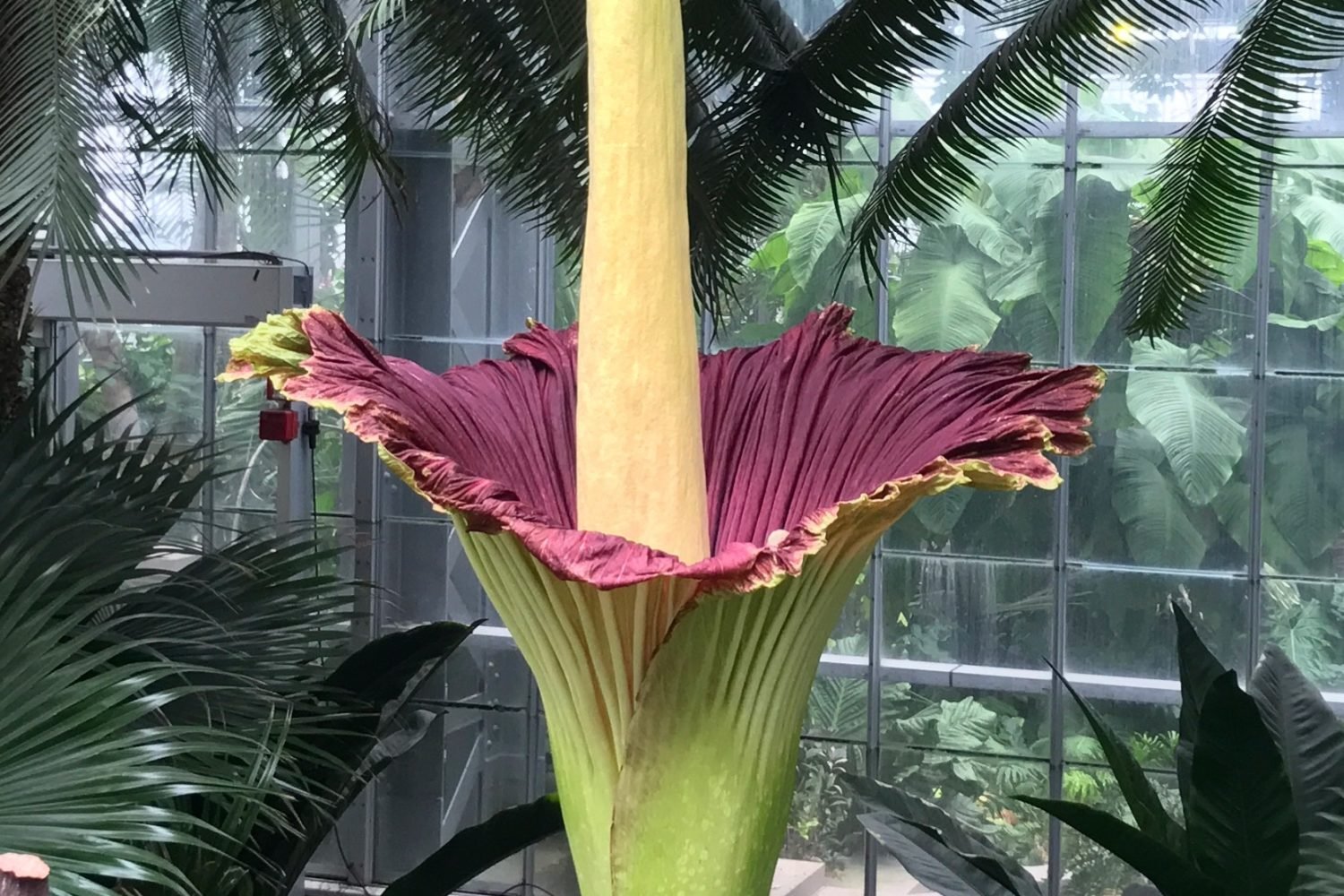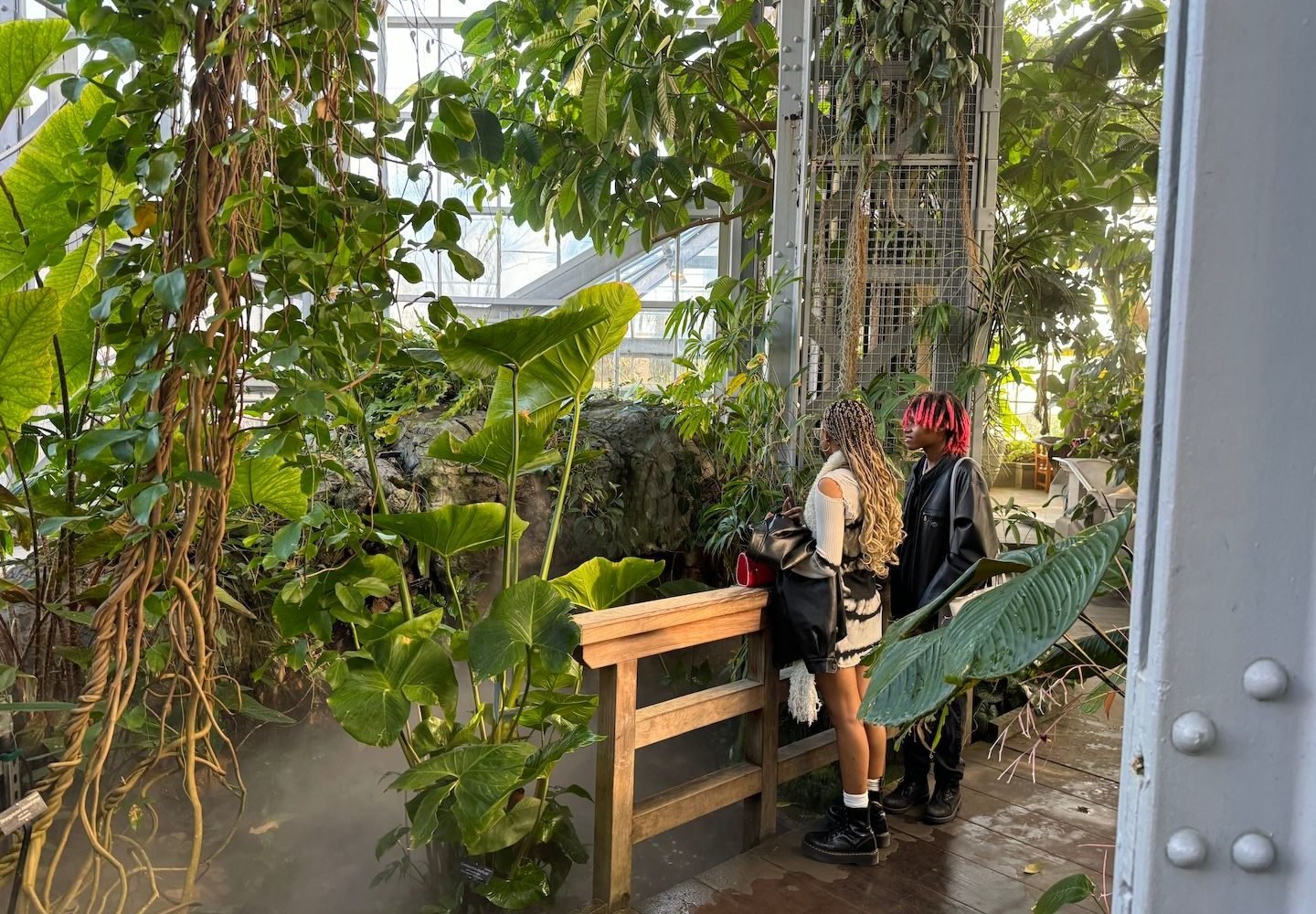This is an update to the corpse flower post below from July 6, 2022: Another corpse flower, the third in three months, is about to bloom—this time at the Smithsonian Gardens outside the Smithsonian Castle, on loan from the US Botanic Garden. The flower’s bloom is unpredictable, but it’ll likely reach its peak this week, so make sure you get a whiff before it’s too late.
A stinky giant started blooming at the United States Botanic Garden Tuesday night and is currently on display for visitors to see—and smell.
The accurately named corpse flower, an endangered plant native to Indonesia, is expected to be open for the next few days. The plant is one of more than 20 mature titan arum plants in the gardens’ collection. Two of the flowers, which typically bloom every three to ten years in the wild and can grow up to 12 feet tall, already bloomed last month. But aside from the plant’s dramatic life cycle and height, it is most famous for its smell, which is also comparable to garlic, fecal matter, or another scent Washingtonians know too well: “If you’ve ever walked by a really stinky trashcan in the middle of a summer day, where it’s kind of heated up and just foul smelling, that’s a pretty good representation of what it smells like,” says Devin Dotson, a spokesperson for the gardens.
Despite its stink, which is meant to attract pollinators and lasts for the first 24 hours that the flower is blooming, the plant fascinates scientists and and garden visitors alike, Dotson says. The flowers have drawn thousands of visitors in the past, and Dotson expects more than 15,000 people will come to see this flower, the oldest in the gardens’ collection, throughout its bloom. Dotson suspects most people come just to get a whiff. “It’s the same reason people take a bite of something and they’re like Ew, taste this,” Dotson says.
But the plants serve a bigger purpose than to just stink up DC for a day. The corpse flower collection is part of a conservation effort from botanic gardens across the country to preserve the plants in danger of extinction. The International Union for Conservation of Nature predicts that the flower has declined by more than 50 percent over the last 150 years, mainly due to a loss of habitat, and that there are only about 1,000 left in the wild. Though the gardens don’t plan on moving the collection to the wild any time soon, scientists are working to develop genetic diversity among the plants and keep them healthy in case the wild population does go extinct. “Instead of actively trying to repopulate at this point, we’re trying to make sure that our populations are good—are they healthy, do they have good genetic diversity, do we have a plan going forward?” Dotson says.
For now, Dotson says the corpse flower collection helps visitors learn a little more about conservation efforts and the plant itself. Although the bloom is a rare occurrence and lasts only about four days, the Botanic Garden has created a near-perfect environment for the plant that allows it to bloom more often than in the wild. Dotson says they’ve got the interval down to two to three years. “Hopefully having these blooms back to back will sort of surprise and delight and we can do a little education,” Dotson says. “They’re huge and they’re beautiful and they’re stinky and they’re short lived and they have all these fascinating elements to them.”
The garden is open daily from 10 AM to 5 PM. Admission is free, and the flower’s bloom is expected to last for the next few days. If you want to brave the dead body smell, you should head over as soon as possible.



















